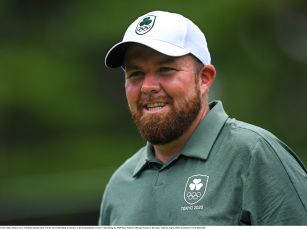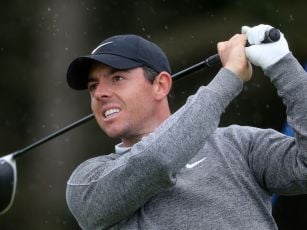If there is one example to show how Parkour and Freerunning have become appreciated by the mainstream, just re-watch Daniel Craig’s first James Bond film.
In Casino Royale there is a chase sequence set in Madagascar where Bond (Craig) chases a man through a construction site, climbing cranes, running through buildings and jumping obstacles.
Bond’s quarry was a man who played a key role in the moulding of the related physical disciplines that we know as Parkour and Freerunning.
That man is Sebastien Foucan and in his typically engaging way he took the time to chat with Newstalk.com about his own experiences with Parkour, how it first developed and how it and Freerunning eventually became known to people across the globe - including here in Ireland.
Indeed, in the UK, Parkour has even been recognised officially as a sport.
It all starts in the small town of Lisses, on the outskirts of Paris where, as teenagers, Foucan (42) and his friends began putting some of the physical fundamentals (running, jumping, climbing and six to seven other activities) together that would become known as Parkour.
“Lisses is a small town, next to Evry which is the bigger town,” says Foucan of the semi-urban playground that would form the foundations of a movement.
CREDIT: Movieclips
“For me it was very good as it was a very family friendly place. Everyone kind of knew each other. Where I grew up, there was lots of grass. It was middle class, kind of. So you had buildings but they weren’t very high. It’s a very grassy area with a lot of nature, a lot of football pitches, tennis courts, swimming pools. If you go there, you’ll see it’s 50% nature, 50% urban. That’s where we started.”
An interesting place to grow up no doubt when it comes to activities and even one of Lisses’ landmarks, the Dame du Lac, would become a staging point to practice climbing and jumping.
Parkour in Ireland: How it's gained traction
Foucan was encouarged to try a number of sports and activities as a child - one of his brothers has been an Olympian in track and field - and his father had wanted him to become a footballer.
“But for me, with my friends, I was more of a lone wolf exploring outside and that’s how I met my friend David,” Foucan explains.
David Belle also grew up in Lisses from the age of 11 during the 1980s and along with Foucan is one of the pioneers of Parkour. His father Raymond, who was born in Vietnam, had gained renown for developing his own skills on military training courses.

Sebastien Foucan arrives for the World Premiere and Royal Performance of Casino Royale, Odeon Leicester Square, London. Picture by Ian West PA Archive/PA Images
And as a young David began honing his own skills, he met Foucan and seven other teenagers in Lisses who would form the original group of Parkour practitioners. Collectively, they became known as the Yamakasi.
“I started with David and with the beginning of what it is now,” Foucan recalls of those early days as Parkour began to take shape.
“I can recall the moment where with David we had nuit blanche - when you’re not sleeping and you’re outside all night - and we were talking about this. It was almost like a propéthie (propechy). We were joking about this, like one day everyone is going to see what we’re doing. But I remember the moment when we were joking about that.”
Daydreams did become reality of course, although Foucan says he is “not attached to the word founder” when it comes to Parkour development. He prefers the term “pioneer” as for him the discipline was something he helped to shape rather than invent outright. Indeed, children naturally run, jump and climb and it’s those elements and movements which form the foundation of Parkour and its related disciplines.
“People like to call me founder but I see myself as a pioneer who was there at a particular time, particular moment which was key for the development of the fashion phenomenon. But however, it’s something we have in all our DNAs. Every kid is desperate to do that,” he said.
The neighbouring towns of Lisses and Evry was where the Yamakasi trained. But how did Parkour go from there to becoming a worldwide phenomenon?
Well, in the way that Twitter, Facebook and YouTube is the spark of many a trend in this new Millennium, TV provided a similar platform in the 1990s.
When Parkour hit French TV screens in 1997 featuring both Foucan and Belle:
Foucan sets the scene: “It was in 1997 and people around us were saying ‘Wow, that’s great what you’re doing. I think you need to show it to someone’ and someone brought a tape and took it to a TV channel in France. That was the first TV programme to show us and put us into the platform and that’s when we realised we had something because the channel had so much response from that [with people asking] ’Where can I learn?’ ‘What is that?’ And that’s where we literally realised we had something special.”
In time different forms of Parkour would develop with Foucan becoming closely associated with Freerunning (the difference is explained more here) and he would play a big role in popularising both disciplines in the UK through the Channel 4 programme Jump London in 2003.
Jump London’s sequel Jump Britain saw Foucan and fellow Freerunners going beyond London, including to Northern Ireland’s Giant’s Causeway and Derry’s Wall.
“I remember Giant’s Causeway very well because the rocks are like stairs. It’s just amazing. I remember that well. I remember the wall also as I jumped it,” he says.
And his discipline has taken him to other parts of the globe including Iceland.
David Belle and Sebastien Foucan meet up:
With the UK recognising Parkour as a sport, there is the potential that some day in the distant future, it could become an Olympic discipline.
“As a vision, I believe it’s going to happen because I believe the Olympics is going to start losing some [of its] audience because you always have to renew yourself,” says Foucan who heads his own academy in London.
“And I believe Parkour has got very strong potential. Now, individually speaking, that’s not what I’m looking for. I’m an artist so for me I will always see it from an artistic and different point of view. But I always say, everybody needs something. Some people need sport and some people will need competition. There was a time when I was saying ‘No competition’ but now I’m more mature and I realise we are all different and people need different things so as far as it’s positive and constructive, I will try to keep the essence of it which is away from the trophy and the medal and move further from the external and closer to the internal.”
Whatever direction, Parkour and Freerunning do go, it’s already come a long way from its beginnings in Lisses.
Like the aforementioned James Bond for instance or David Belle’s appearances in the likes of French action film District 13 in 2004.
Foucan has also appeared in a Madonna music video and on one of her tours, as well as Series 7 of Dancing on Ice in the UK.
On Casino Royale, he concludes: “That was one of the best experiences in my life. I hadn’t done acting or never planned to be in a movie and I go straight into James Bond. So for me, it was absolutely amazing and it also gave me an opportunity to show my skills to the world. It will stay in my heart forever.”
What's the difference between Parkour and Freerunning?
Download the brand new OffTheBall App in the Play Store & App Store right now! We've got you covered!
Subscribe to OffTheBall's YouTube channel for more videos, like us on Facebook or follow us on Twitter for the latest sporting news and content.








